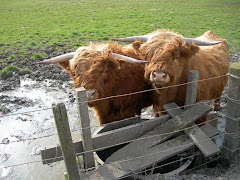As a Certified Fly Casting Instructor, I am often asked about how I learned to fly cast and "it must be very difficult, right?". For several years, I tried to teach myself how to cast a fly using a fly rod and reel, only to be met with frustration while not being able to ascertain what my casting problems were. The harder I tried to make the line cast further, it seemed line would just tie itself in knots. If there was any noticeable wind, I would have to stop casting for the day as my casting ability just sort of pooped out on me!
One day while clicking around on the Internet, I discovered an organization called the Federation of Fly Fishers referred to as the FFF. And As I dug into the web site a little deeper, there were some casting guidelines which I read with interest. It seemed this organization had discovered the solution to many of my problems. Well, to make a long story fairly short, I joined the FFF and began my education on how to become a much improved fly caster.
The FFF is the only organization in the world to define and distinguish the difference between fly casting style and fly casting essentials. Turns out, there are five essentials which I will cover in brief.
First: There must be a pause at the end of each casting stroke. The length of the pause varies in duration with the amount of line beyond the rod tip.
Second: Slack line should be kept to an absolutely minimum.
Third: In order to form the most efficient, least air resistant loops and to direct energy to the fly which is cast to a specific target, the caster must mote the rod tip in a straight line path.
Fourth: The size of the casting arc must vary with the length of the line past the rod tip. There are two kinds of arcs:
Casting Arc: the angle between the rod at the beginning of the casting stroke and the rod at the end of the stroke.
Casting Stroke: the movement of the hand and arm to apply power to the rod (excluding any pick-up, drift, or follow-through movements.)
Fifth: Power must be applied in the proper amount at the proper place in the casting.
All other observations you might make regarding fly casting which do not relate to these five essentials falls into the category of casting style. My recommendation would be to get several hours of instruction from an FFF Certified Casting Instructor. Join the FFF and get to know some other fly casters in your area. These FFF lessons will help you to achieve a level of enjoyment which you may never reach through self instruction.
To it today! http://www.fedflyfishers.org
Bill Rakozy, President of 4x4Kayak Fishing Adventures, has worked full time in the sport fishing industry for over twenty years. He holds a Masters Degree from Michigan State University and is a (Federation of Fly Fishers) FFF Certified Casting Instructor. He has been kayak fishing for the past six years and now offers guided kayak fishing trips to Baja Sur, Mexico, Costa Rica and the Bahamas.
http://www.4x4kayakfishing.com
Article Source: http://EzineArticles.com/?expert=William_Rakozy
William Rakozy - EzineArticles Expert Author
Subscribe to:
Post Comments (Atom)









No comments:
Post a Comment